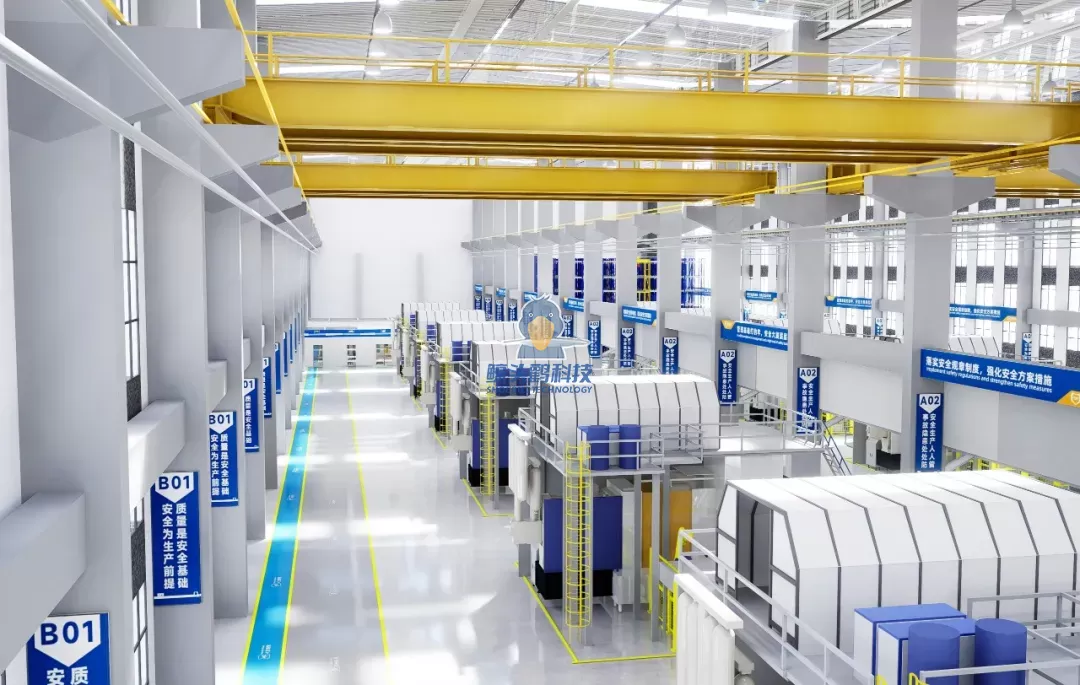Introduction to Smart Manufacturing Factory Planning
In today’s industrial landscape, smart manufacturing factory planning has become a decisive factor in achieving competitiveness. Companies that integrate intelligent planning systems with advanced digital tools can optimize resource allocation, minimize downtime, and achieve leaner operations. Unlike conventional manufacturing approaches, smart planning focuses on data-driven decision-making, predictive analytics, and interconnected systems, forming the foundation of Industry 4.0. In this blog post, Shoebill Technology, a high quality benchmark factory design service provider, will share the characteristics of smart manufacturing factory planning.
Core Concept of Smart Manufacturing Facility Design
At the heart of smart factory planning lies a structured approach to factory design. A well-conceived facility plan ensures efficient workflows, balanced production lines, and strategic placement of machinery. Smart factory layouts also incorporate modularity, allowing companies to expand or adjust production lines as demand shifts. This approach reduces bottlenecks, shortens production cycles, and helps manufacturers adapt quickly to market changes.
Digital Transformation in Factory Planning
One of the major drivers of intelligent manufacturing factory planning is digital transformation. By leveraging IoT devices, cloud computing, and big data analytics, companies can collect real-time data from production lines. These insights support better forecasting, supply chain integration, and proactive maintenance. For instance, predictive algorithms can detect potential machine failures before they occur, reducing downtime and enhancing operational resilience.

Smart Manufacturing Planning and Automation Integration
Automation plays a critical role in smart production facility planning. Robotics, automated guided vehicles (AGVs), and machine learning systems streamline repetitive tasks while improving precision. By integrating automation into factory planning, manufacturers not only cut labor-intensive processes but also elevate product consistency. Strategic deployment of automation also requires careful planning of energy usage, material handling, and workforce retraining, ensuring maximum value from the technology.
Sustainability in Smart Factory Layouts
A forward-looking smart manufacturing factory layout incorporates sustainability into its design. Energy-efficient machinery, renewable energy sources, and advanced air filtration systems contribute to greener production. Moreover, circular economy principles are increasingly embedded into planning, where waste heat recovery and materials recycling are part of the facility’s ecosystem. Smart planning ensures that efficiency gains align with environmental responsibilities, helping companies meet global sustainability standards.
Data-Driven Decision-Making in Smart Manufacturing
One of the defining advantages of data-driven factory planning is the ability to simulate production scenarios before implementation. Digital twins and simulation software allow manufacturers to model different layouts, material flows, and workforce requirements. This reduces costly trial-and-error during construction or restructuring. Furthermore, data-driven planning enhances supply chain visibility, helping manufacturers coordinate with suppliers and distributors in real time.
Workforce Transformation and Smart Planning
Smart manufacturing factory planning is not limited to machines and systems; it also addresses workforce transformation. Human-robot collaboration, augmented reality (AR) training, and digital dashboards empower employees to work more efficiently. Planning for workforce engagement ensures smooth adoption of advanced systems. When employees are trained to interpret real-time data and manage smart tools, productivity and job satisfaction both rise.
Challenges in Implementing Smart Factory Planning
Despite its potential, implementing smart manufacturing planning is not without challenges. High upfront costs, cybersecurity risks, and the complexity of integrating legacy systems often create barriers. Additionally, companies must balance the pace of technological adoption with regulatory compliance and workforce adaptation. Addressing these challenges requires phased implementation strategies, robust cybersecurity frameworks, and long-term vision from leadership teams.
Applications Across Industries
The principles of smart factory planning are being applied across multiple industries. In automotive manufacturing, advanced robotics and AI-driven scheduling improve assembly precision. In pharmaceuticals, smart layouts ensure strict regulatory compliance while boosting production capacity. Electronics manufacturers rely on digital twins for planning flexible lines that can rapidly switch between product models. Each industry tailors smart planning principles to its specific requirements, but the underlying logic remains consistent—efficiency, agility, and resilience.
Long-Term Value of Smart Manufacturing Factory Planning
The long-term benefits of intelligent factory planning extend beyond cost savings. By aligning planning with digital tools, manufacturers build a foundation for continuous innovation. Smart factories become adaptable ecosystems where every component, from machines to employees, contributes to efficiency. Furthermore, smart planning enhances competitiveness by reducing lead times, improving quality, and meeting customer demands with greater precision.
Conclusion
As Industry 4.0 accelerates, smart manufacturing factory planning will define the next generation of industrial growth. Organizations that adopt data-driven design, automation integration, and sustainable practices will position themselves ahead of competitors. The future smart factory is not just a production space—it is a dynamic, adaptive system designed for efficiency, resilience, and innovation. Careful planning is the cornerstone of making this vision a reality.










